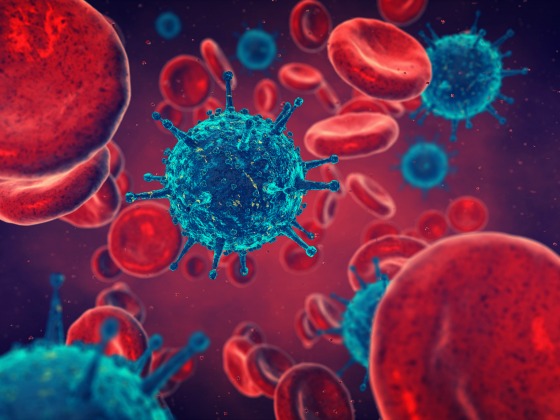The World Health Organization keeps a list of viruses and bacteria with “pandemic potential”. These nine pathogens are the ones most likely to infect humans and become pandemics.
Jill Weatherhead of Baylor College of Medicine says prioritizing diseases is generally based on two factors: their ability to spread and the ability of humans to treat them. A revised list is likely coming within the next few months.
Which one will the
release choose determine to be the next major pandemic for which we all need to obey, comply, and be totally controlled by a ruling class to prevent? Which one will require forced vaccinations? Will one of these actually do real-world harm instead of just giving people a cold? Time will tell. But let’s be aware of what is on their radar at least, so we can adequately prepare when they decide which one of these will be “the one.”
Pay attention to the short video below. It details the possibility that the ruling class completely fabricated the entire COVID-19 scamdemic. It’s also why we should hone our logical thought process and discernment before the “next pandemic” is shoved in our faces.
But in the meantime, here is what the WHO is watching, according to NPR (government-funded propaganda):
Nipah virus
What animals carry it: fruit bats, including those called flying foxes, and domestic animals such as pigs, horses, cats and dogs
How it spreads: Nipah virus can be transmitted to humans from animals or contaminated foods. It can also be transmitted directly from human to human.
Its toll: 40% to 75% fatality rate. The virus can also cause encephalitis or swelling of the brain.
Medical toolbox: There is no vaccine available for either people or animals. Monoclonal antibody therapies are in development.
Pandemic potential: Outbreaks occur almost every year in parts of Asia, but there are known ways to prevent the spread of the virus. Prevention efforts include avoiding exposure to bats and sick animals, avoiding consumption of fruits that bats may have nibbled on, and not drinking certain raw juices from fruits that bats feed on. The risk of international transmission can be lowered by washing those fruits and fruit products thoroughly and peeling them before eating.
Crimean-Congo hemorrhagic fever
What animals carry it: ticks, livestock
How it spreads: Humans usually get the virus from contact with ticks or infected livestock. Getting the virus from another person requires close contact with blood or other bodily fluids from an infected person.
Its toll: 10% to 40% fatality rate. The disease is endemic, meaning it occurs regularly, in Africa, the Balkans, the Middle East and Asia. The virus causes severe outbreaks of viral hemorrhagic fever, a condition that can damage the body’s organ systems and cardiovascular system and that often includes severe bleeding.
Medical toolbox: Although a vaccine is in use in Bulgaria, no research has been published on how well it works, and it’s not licensed anywhere else. Other vaccines are in development, and an antiviral drug called ribavirin appears to help treat infections.
Pandemic potential: It’s difficult to tell when an animal is infected and should be avoided, and the WHO says the ticks that carry the virus are numerous and widespread. The threat could be reduced by trying to avoid tick bites and wearing gloves and other protective clothing when around livestock.
Lassa fever
What animals carry it: rats and other rodents
How it spreads: The virus is endemic in parts of West Africa. Rats excrete the virus, and humans pick it up when exposed to the rodents’ urine and feces, either through direct contact or by eating contaminated food. It can also spread between humans through direct contact with an infected person’s secretions (blood, urine, feces), through sexual contact, and in medical settings via contaminated equipment.
Its toll: 1%, but up to 15% in severe hospitalized cases. It can be deadly for people and fetuses in the third trimester of pregnancy. Besides death, a common complication is deafness, which can be permanent.
Medical toolbox: There is no vaccine, but ribavirin seems to help treat infections.
Pandemic potential: Because the primary method of transmission is exposure to a certain type of rat, the potential for the spread of the disease is most likely limited to the countries where the rat lives.
Rift Valley fever
What animals carry it: mosquitoes. The insects can transmit the virus to both humans and their own offspring. Livestock such as cattle, sheep, goats, buffalo, and camels can also get infected.
How it spreads: It spreads to people through contact with blood, other body fluids or tissues of infected animals.
Its toll: Although the fatality level is less than 1% and the disease is mild for most people, about 8% to 10% of people infected develop severe symptoms, including eye lesions, encephalitis, and hemorrhagic fever.
Medical toolbox: Although a vaccine has been developed, it is not yet licensed or available.
Pandemic potential: Rift Valley fever has spread from Africa to Saudi Arabia and Yemen. Flooding seems to contribute to more Rift Valley fever because more virus-infected mosquitoes buzz about after heavy rainfalls. Rapid case detection, including prompt laboratory testing of people with symptoms, has limited recent outbreaks.
Zika
What animals carry it: mosquitoes
How it spreads: In addition to mosquito bites, the virus can spread from a pregnant person to a fetus. The disease can also be transmitted through sex and probably through blood transfusions.
Its toll: It’s rarely fatal, but Zika can cause severe brain defects in fetuses, including microcephaly. It has also been linked to miscarriage, stillbirth and other birth defects.
Medical toolbox: No treatment or vaccine
Pandemic potential: So far, it’s largely limited to areas where Zika-carrying mosquitoes live.
Ebola and Marburg virus disease
What animals carry them: Bats and nonhuman primates are believed to carry the viruses, from the filovirus family, that cause these hemorrhagic fevers.
How they spread: Both viruses are believed to spread in the same way. After the initial spillover from an animal, humans spread the viruses to other humans through direct contact with blood or other bodily fluids of a person who is symptomatic or who has died from the disease. The viruses can also spread through objects or surfaces contaminated with bodily fluids and through semen from people who have recovered from the disease.
Their toll: The average fatality rate is about 50%, though rates have varied from 25% to 90% in past outbreaks.
Medical toolbox: Vaccines have been used for Ebola in Guinea and the Democratic Republic of Congo. Monoclonal antibodies approved by the Food and Drug Administration in 2020 can also help with the treatment of Ebola. Vaccines for the Marburg virus are in development.
Pandemic potential: These viruses can spread quickly in healthcare settings, especially when proper sterilization isn’t used. However, the disease spreads only when a person is symptomatic, making it easier to control.
MERS (Middle East respiratory syndrome)
What animals carry it: camels
How it spreads: After the initial spillover event from camels to humans, this coronavirus can spread from person to person through close contact with an infected person.
Its toll: The reported fatality rate, according to the WHO, is 35%.
Medical toolbox: Several vaccines are in development, but none have been approved.
Pandemic potential: 27 countries have reported infections since 2012. Unlike SARS-CoV-2, the coronavirus that causes MERS grows deep in the respiratory tract, making it much less likely to be transmitted through sneezing and coughing.
SARS (severe acute respiratory syndrome)
What animals carry it: Palm civets were largely blamed for the 2003 outbreak. Bats and possibly other wildlife also carry it.
How it spreads: After the initial spillover event from animal to human, SARS can spread from person to person through close contact with an infected person. It’s believed to usually spread through droplets from coughs and sneezes and sometimes through surfaces touched by infectious people.
Its toll: less than a 1% fatality rate
Medical toolbox: No treatment or vaccine has been approved.
Pandemic potential: Unlike SARS-CoV-2, which can spread before people know they’re infectious, this SARS virus is usually spread only by those with known symptoms, making it much easier to contain through public health measures such as quarantining. The 2003 outbreak was contained after causing about 8,000 cases and 700 deaths in 29 countries.
Disease X
The WHO says it does not rank diseases in any order of potential threat, but it acknowledges the possibility that an as-yet-unknown disease could cause a serious pandemic.
In her work with bat viruses, for example, Raina Plowright of Cornell University says that even in the small proportion of bat species that have been studied, the animals carry thousands of viruses, “and we have no clue how many present risk,” she says. “We don’t have the technology to take a sequence and say with certainty whether it can infect humans or can transmit from human to human. We’re blind, really.”
Not to mention that variants pose threats, she says. “Just the tiniest genetic change can have a profound effect. What if we had [a pathogen] with a 50% fatality rate that transmitted efficiently?”











0 Comments